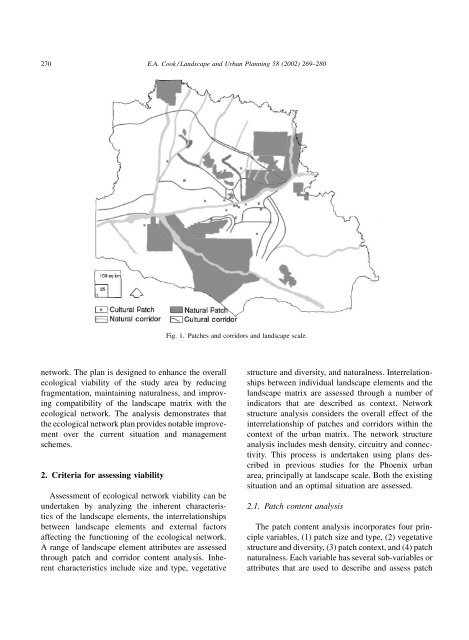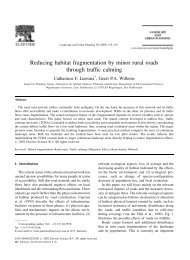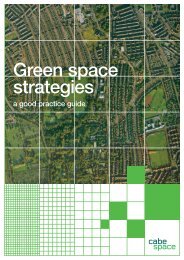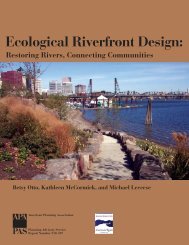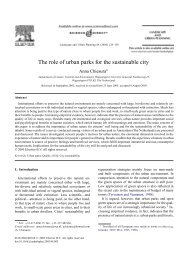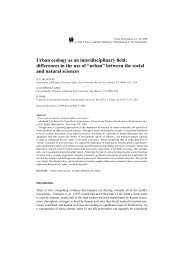Landscape structure indices for assessing urban ecological networks
Landscape structure indices for assessing urban ecological networks
Landscape structure indices for assessing urban ecological networks
You also want an ePaper? Increase the reach of your titles
YUMPU automatically turns print PDFs into web optimized ePapers that Google loves.
270 E.A. Cook / <strong>Landscape</strong> and Urban Planning 58 (2002) 269–280Fig. 1. Patches and corridors and landscape scale.network. The plan is designed to enhance the overall<strong>ecological</strong> viability of the study area by reducingfragmentation, maintaining naturalness, and improvingcompatibility of the landscape matrix with the<strong>ecological</strong> network. The analysis demonstrates thatthe <strong>ecological</strong> network plan provides notable improvementover the current situation and managementschemes.2. Criteria <strong>for</strong> <strong>assessing</strong> viabilityAssessment of <strong>ecological</strong> network viability can beundertaken by analyzing the inherent characteristicsof the landscape elements, the interrelationshipsbetween landscape elements and external factorsaffecting the functioning of the <strong>ecological</strong> network.A range of landscape element attributes are assessedthrough patch and corridor content analysis. Inherentcharacteristics include size and type, vegetative<strong>structure</strong> and diversity, and naturalness. Interrelationshipsbetween individual landscape elements and thelandscape matrix are assessed through a number ofindicators that are described as context. Network<strong>structure</strong> analysis considers the overall effect of theinterrelationship of patches and corridors within thecontext of the <strong>urban</strong> matrix. The network <strong>structure</strong>analysis includes mesh density, circuitry and connectivity.This process is undertaken using plans describedin previous studies <strong>for</strong> the Phoenix <strong>urban</strong>area, principally at landscape scale. Both the existingsituation and an optimal situation are assessed.2.1. Patch content analysisThe patch content analysis incorporates four principlevariables, (1) patch size and type, (2) vegetative<strong>structure</strong> and diversity, (3) patch context, and (4) patchnaturalness. Each variable has several sub-variables orattributes that are used to describe and assess patch


